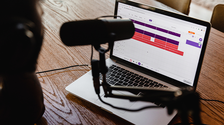Summer is a much awaited time for the majority of French people, but not only because of vacations, sea and hot weather.
This season is full of cultural and sport events. One of the most important and followed is Le Tour de France which is held every juillet. So instead of just focusing on the beach, this year I suggest for you to become a fan of this course (race) and soutenez l’équipe (support the team) of your country (or even the French in French language). Besides, the race offers you a great possibility of discovering French towns and villages and many places of interest.
This year the race started on the 5th of July in Angleterre and will finish on the 27th of July in Paris. It is made up of 21 étapes (stages) including 9 étapes de plaine (flat stages), 5 étapes accidentées (hill stages), 6 étapes de montagne avec 5 arrivées en altitude (mountain stages with 5 altitude finishes), 1 étape contre la montre en individuel (individual time-trial stage), 2 journées de repos (rest days).
Before we speak about the race itself, I’ll tell what you don’t see on TV. Every race is preceded by la caravane publicitaire (publicity caravan) representing different trademarks. They say that there are more people who come to see the caravan rather than the race itself. One can see lots of different cars decorated in the colours of trademarks, often distributing small presents to the spectators.
When you watch the race you can see different motorcycles preceding and following the riders. There are les cameramen et les photographes who try to catch a perfect shot, les distributeurs de bidons (can distributors), l’ardoisier (the one who carries a slate board with timing on it) et les régulateurs (regulators) who manage this traffic. There are also many cars, those of des commissaires, des invités, and especially those of directeurs sportifs.
Every day numerous coureurs (riders) of different teams (do you remember the French word?) compete for gagner (to win) the stage of the day and become the vainqueur du jour (winner of the day), and the one who wins the most of them gets le maillot jaune (yellow jersey) or to win the most number of points and get le maillot vert (green jersey).
They also compete for being the best mountain cyclist to get le maillot à pois (polka dot jersey) or the best young coureur to get le maillot blanc (white jersey). They face many dangers and obstacles. It happens that the riders chutent (crash) and get blessés (injured) and even abandonent the race. Often one of the riders takes une échappée (breakaway), others try to poursivre (to chase) him and form a small group and the majority of the riders follow them in the peloton.

Image by wjarrettc (CC BY 2.0)
The inhabitants of the towns through which the Tour passes participate actively in the life of this event. They invent different giant monuments or pictures so that helicopters show their support and passion to the TV spectators of the race.
If you want more information about the event, you may visit the official Tour de France site for your reference.
I would also be glad if you share your thoughts about this famous race. Here are some helpful phrases for discussing the Tour de France with French speakers:
Est-ce que vous avez déjà regardé ou assisté au Tour de France?
Have you ever watched or assisted le Tour de France?
Qui est votre coureur préféré?
Who is your favourite rider?
Quelle équipe soutenez vous?
Which team do you support?
A votre avis qui a le plus de chance de gagner?
In your opinion, who has the better chance to win?
Et vous, faites vous du vélo?
Do you practice cycling?
You can discuss the Tour with your Language Partner, italki teacher, or exchange opinions in the discussion!
Hero Image by Johan Vandamme (CC BY 2.0)







